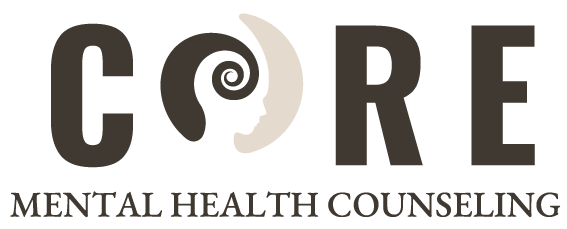I knew I should have left earlier with this traffic. I won’t have time to get a coffee. Who signs up for a training when they have so much work to do at the office? I was on route and running late to the Solution-Focused Brief Therapy workshop. I was reminded of Mark Twain’s words: “I am an old man and have known a great many troubles, but most of them have never happened.” I signed up for the training when I noticed symptoms of burnout related to work. Everything feels harder when I feel burnt out. A good training usually does the trick to rekindle my passion for this work.
I hurried to my seat and the training began. The instructor asked the audience if we ever noticed that our brain highlights problems more than solutions. She asked if we notice a slight tendency to focus on the negative more than the positive. Slight? I asked myself.
She began describing Solution-Focused Brief Therapy (SFBT). SFBT is an evidence-based therapy that focuses on strengths, achievable goals, and internal and external resources. The modality tirelessly redirects thoughts and speech toward the desired outcome despite repeated attempts (of our brain) to stay focused on the problem. We are going to get to one of my favorite SFBT exercises that you can try at home in a moment.
At that point, I had been working in addiction treatment for several years. We were trained to look for the holes in the swiss cheese; not the cheese itself. Instead of examining how the person had survived for so long, we looked for what was missing in their life. What was wrong and what do we need to work on? I did that so much that I began psycho-analyzing everyone around me, even the mailman. He’d say “good morning” and I’d say: what happened to you? Everyone around me loved it, I am certain.
With an active problem-focused brain; life can start to feel like a never-ending to do list. We focus on the lawn that needs to be cut, the debt that needs to be payed, the work that needs to get done, and having to drive the kids to practice. Sometimes that part of us doesn’t know how to turn off and life starts to feel like a series of moments we need to just get through. This is often where substance abuse comes into play. We use substances to relieve our stress (regulate our nervous system) or to feel something if we’ve become numb (nervous system shut down).
I use SFBT at the beginning of therapy to identify the target or the pot of gold at the end of therapy. The therapeutic relationship, although sacred and beautiful, has a beginning and end. When I work with people, I want to know right away; how would you like to feel or think when we are done? How will you know when we are done? What is getting in the way of that goal?
The “Miracle Question” is one of my favorite ways to get that answer. Let’s try it now. Grab a pen and paper and get ready to take some notes. Get comfortable in your seat and let your imagination run free. Let the pressure of time go. Let go of the to-do list. You can always pick it up when we are done. Ponder for a few moments this question.
Suppose you were to go to bed tonight and a miracle were to take place. The problems that have been weighing you down are gone. Let yourself feel that. What do you notice first? Describe it in detail so I can imagine it too.
· What do you see?
· What emotions do you feel?
· What do those emotions feel like and where are they in your body? (warmth, tingling, in my chest, my face, etc.)
· What are you thinking about (instead of what you were thinking about)? Are you thinking about anything differently?
· What are you doing? How are you interacting with the people around you?
· Where are you and who are you with?
· How do you look (posture, facial expressions, etc.)?
· What does your family notice, your pet, your spouse, etc.?
How does it feel to take a moment and think about this? How far from that miracle place are you? When you begin to think about the solutions, you’re tapping into a network in your brain (literally) that is geared toward creativity, positive emotion, adaptability, and sees opportunity rather than problems. Then we begin to act in a way that brings about those desired changes. Its important to identify and focus on goals as people are motivated more to get what they want than to avoid something they don’t want. When we are problem-focused we forget about how wonderful it felt to purchase the home with a lawn, the freedom to buy what we need, that we have a job, and the joys of being a parent. We forget about gratitude.
If your miracle image feels so far away that it makes you feel sad or stuck, it might be a time to reach out for help; it’s often one phone call away. SFBT reminds us that being stuck and feeling stuck are two different things. It allows us to remember that we have more power and influence over our lives than we think. So if nothing else from this reading, just for today; focus on the cheese.

